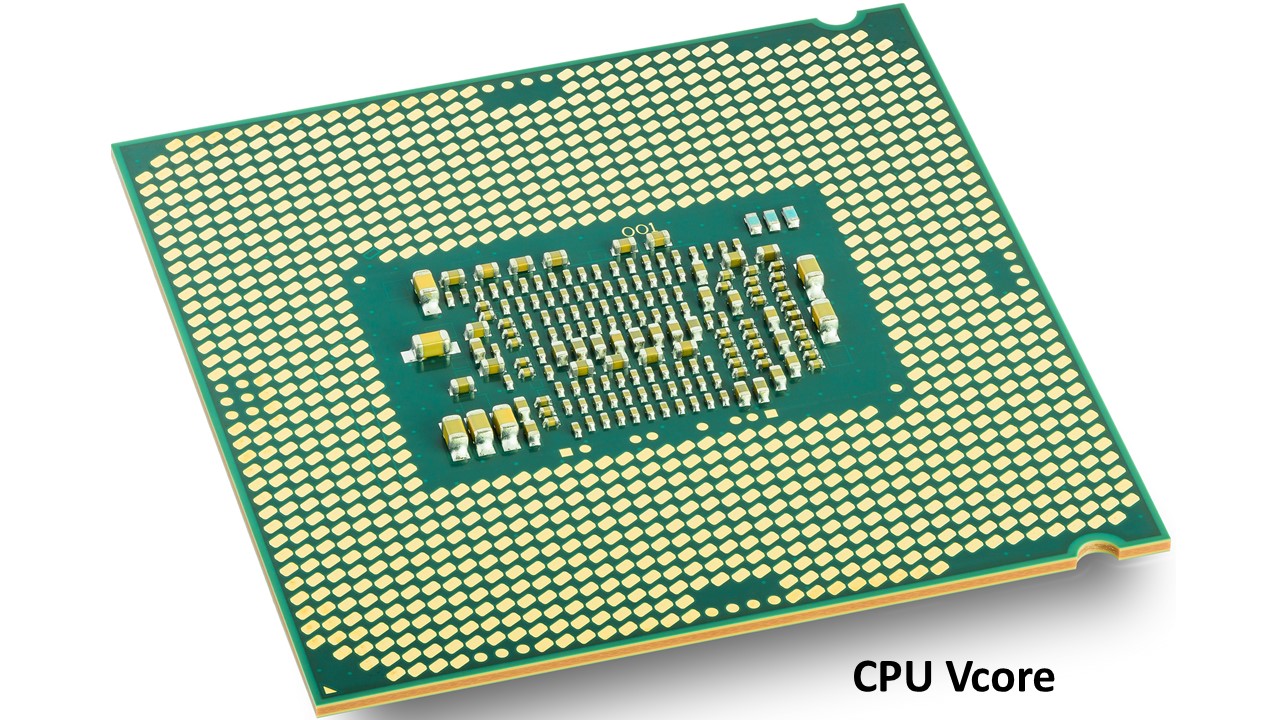In This Article
What is CPU Vcore?
CPU Vcore, or CPU core voltage, refers to the amount of power supplied to the Central Processing Unit of the computer system.
KEY TAKEAWAYS
- CPU core voltage is the power required by the processor of a computer to function.
- Measured in terms of volts, the value of the CPU Vcore may vary according to the size and speed of the CPU.
- The CPU core voltage is usually determined by the internal speed of each of the processors.
- Higher voltage is required by the processor that operates at a high speed in order to function efficiently.
- The higher the amount of power used by the CPU, the more heat will be generated.
Understanding CPU Vcore

CPU Vcore is the power used by the Central Processing Unit and is usually measured in volts.
Ideally, there is a Voltage Identification Definition, or VID, which determines the amount of voltage required by the CPU.
This amount enables the processor to function at a stable rate even at its default clock speed.
This amount, or VID, varies depending on the model of the processor. However, even if the VID is the same for all processors of the same model, they may not all use the same voltage.
This is primarily due to the variance in clock speeds and voltage core, which is the result of the differences in the silicon quality.
Still, the core voltage allows the CPUs to maintain a consistent value when they are in use, provided they do not experience heavy workloads that may result in a fluctuation of the core voltage.
In such a situation, which is often referred to as Vdroop, the fluctuation in voltage should be rectified by means of load-line calibration.
This is a specific process where further voltage is supplied as and when the load on the CPU increases. This eventually helps in maintaining its stability.
Ideally, it is the motherboard of a computer system that supplies the primary core voltage, based on two aspects of the processors, such as:
- The size
- The speed
Therefore, a processor with a higher speed will need more core voltage to run fast, but it will also generate more heat.
Therefore, the operating voltage of a processor is typically broken into two significant classes, such as:
- The core voltage – This refers to the maximum voltage needed for the CPU to run.
- The I/O voltage – This refers to the power needed by the other parts the CPU interfaces with and displays the output.
It is the Basic Input Output System (BIOS) of the motherboard of the computer system, once again, that sets the voltage core value automatically, which is expressed in decimal values, usually having three decimal places.
It is normally set to Auto by the BIOS, but you can change it into Manual mode. If you do so, you will be able to alter the voltage according to your requirements and personal preferences.
Usually, there is a voltage regulator module to control the CPU core voltage and to ensure that it is much lower than 2 volts.
While overclocking or underclocking manually, you should always check the CPU core voltage first because it is the most sensitive part of the ‘brain’ of the computer.
However, changing the voltage will also affect the temperature and, in turn, the performance of the CPU.
Therefore, the safest way to make adjustments to the CPU core voltage is to increase or decrease it in small increments, say of about 0.01 volts.
Remember, appropriate adjustments made in the CPU Vcore will not result in a dramatic increase in the temperature of the processor and save you from the trouble and cost of upgrading the CPU cooler.
What is a Normal CPU Vcore?
The normal core voltage required by the CPU ranges anywhere between 0.9 volts and 1.3 volts. However, the net requirement is defined by the performance criteria of the particular processor.
It also depends on the core supply voltage tolerance requirement, which is normally ± 3%.
Whatever the situation is, maintaining a core voltage in excess of 1.3 volts may damage the circuits of the processor.
Therefore, it is important for you to keep a check on the core voltage if you really want to ensure stability in the performance of your CPU and computer system as a whole.
The best way to do that is to boot into the motherboard BIOS and check the settings.
What Does CPU Vcore Do?
The CPU Vcore actually determines the amount of power the processor can use and, as a result, the amount of heat it can generate.
In a way, the CPU core voltage plays an important role in the performance of the processor.
Conclusion
The CPU Vcore or core voltage is an important feature of the processor that influences the performance of it and the computer system.
When the correct amount of voltage or power supply is maintained in the CPU, it will be able to communicate with the other parts of the computer system much more efficiently.